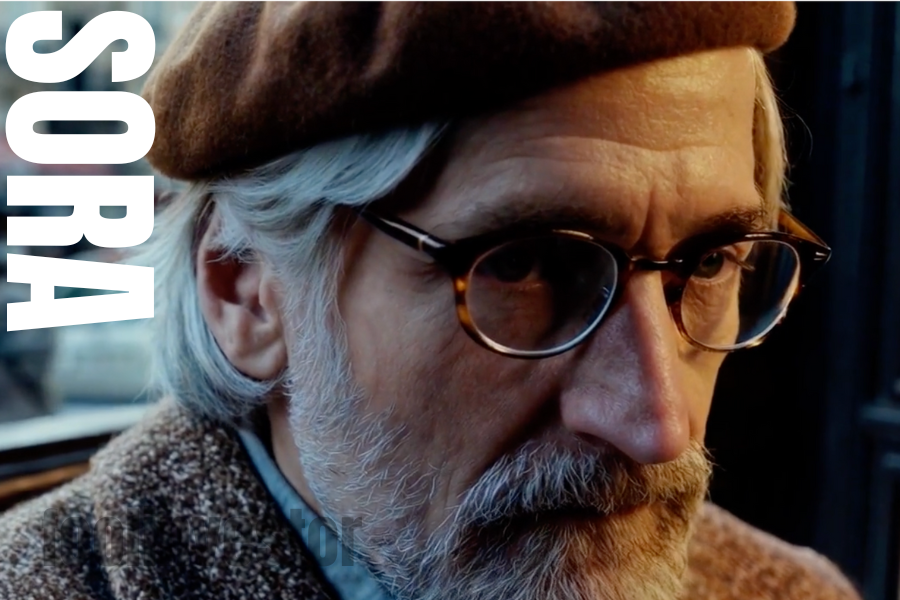Table of Contents
- Introduction
- What is Sora?
- The Concept of Sora
- Unveiling Sora: A Breakthrough in Generative AI
- Examples of Videos Created by Sora
- How Does Sora Work?
- Similarities to OpenAI’s Text-to-Image Generator
- Understanding Language and Interpreting Prompts
- Creating Complex Scenes and Accurate Details
- The Capabilities of Sora
- A Deep Understanding of Language
- Creating Videos with Multiple Characters and Camera Shots
- Specific Types of Motion and Accurate Details
- Challenges Faced by Sora
- Accurately Simulating Physics in Complex Scenes
- Understanding Cause and Effect
- Confusing Spatial Details and Descriptions over Time
- Ethical and Societal Implications of AI
- Importance of Safety Precautions
- Adversarial Testing and Detection of Misleading Content
- The Journey of Sora: From Limited Access to Public Availability
- Collaboration with Red Teamers and Creative Professionals
- Feedback and Future Advancements
- Testimonials and Reviews: Sora in Action
- YouTube Star Jimmy Donaldson (MrBeast) Puts Sora to the Test
- User Experiences and Impressions
- Conclusion: The Future of Text-to-Video Generation with Sora
1. Introduction
Artificial Intelligence (AI) has reached new heights with the emergence of cutting-edge technologies such as OpenAI’s Sora, a revolutionary text-to-video generator. This groundbreaking tool has the ability to transform written prompts into visually stunning and immersive videos. In this article, we will delve into the world of Sora, exploring its capabilities, applications, and the challenges it faces.
2. What is Sora?
The Concept of Sora
Sora is an advanced AI model developed by OpenAI, the creator of Chat GPT. Its primary objective is to understand and simulate the physical world in motion. By training models that can accurately generate videos based on written prompts, Sora aims to assist users in solving problems that require real-world interaction.
Unveiling Sora: A Breakthrough in Generative AI
OpenAI recently announced the launch of Sora, showcasing its capabilities by sharing videos created by this text-to-video generator. The company is keen on involving users outside of OpenAI to gain feedback and provide a glimpse of the AI capabilities that lie ahead.
Examples of Videos Created by Sora
Sora has demonstrated its prowess in creating captivating videos based on user prompts. These videos showcase a wide range of scenes, from historical footage of the California Gold Rush to an animated monster kneeling beside a melting red candle. The accuracy and attention to detail in these videos are remarkable, making Sora a powerful tool for creative professionals and visual artists.
3. How Does Sora Work?
Similarities to OpenAI’s Text-to-Image Generator
Sora operates on a similar principle to OpenAI’s text-to-image generator. Users simply need to input a written prompt, and Sora will generate a video based on that prompt. However, access to Sora is currently limited to red teamers, who assess potential harms or risks, as well as visual artists, designers, and filmmakers who provide valuable feedback for further advancements.
Understanding Language and Interpreting Prompts
Sora’s deep understanding of language enables it to accurately interpret and comprehend written prompts. This understanding goes beyond the literal meaning of the words and incorporates the nuances and context necessary to generate compelling videos. It can interpret prompts that involve complex scenes, multiple characters, and specific types of motion.
Creating Complex Scenes and Accurate Details
One of the key strengths of Sora is its ability to create complex scenes with multiple characters and camera shots. By understanding the prompts and leveraging its knowledge of the physical world, Sora can generate videos up to a minute long, maintaining visual quality and accuracy in adhering to the user’s prompt. The attention to detail in these generated videos is truly remarkable.
4. The Capabilities of Sora
A Deep Understanding of Language
Sora’s deep understanding of language allows it to accurately interpret written prompts and generate videos that reflect the intended meaning and emotions. By analyzing the prompts, Sora can generate scenes that bring characters to life and evoke vibrant emotions.
Creating Videos with Multiple Characters and Camera Shots
Sora has the capability to create videos with multiple characters, adding depth and complexity to the scenes. Whether it’s a stylish woman walking down a Tokyo street or a space man exploring a salt desert, Sora can accurately depict characters in various settings and scenarios.
Specific Types of Motion and Accurate Details
Sora’s advanced algorithms enable it to generate videos with specific types of motion, capturing the essence of the prompts. Whether it’s the gentle flutter of paper airplanes in a dense jungle or the realistic movements of wooly mammoths treading through a snowy meadow, Sora can bring these scenes to life with remarkable accuracy.
5. Challenges Faced by Sora
Accurately Simulating Physics in Complex Scenes
While Sora excels in generating videos, accurately simulating the physics of complex scenes can be challenging. It requires a deep understanding of how objects interact with each other and how forces influence their movements. OpenAI continues to refine Sora’s capabilities in this area to enhance the realism of the generated videos.
Understanding Cause and Effect
Sora occasionally faces difficulties in understanding cause and effect relationships within prompts. For instance, it may struggle to simulate instances where someone bites into a cookie, but the cookie doesn’t show a bite mark afterward. OpenAI acknowledges this challenge and is actively working to improve Sora’s ability to handle such complexities.
Confusing Spatial Details and Descriptions over Time
Spatial details and descriptions over time can pose a challenge for Sora. It may sometimes misinterpret or confuse left and right, leading to inaccuracies in the generated videos. OpenAI recognizes this issue and is dedicated to refining Sora’s spatial understanding to ensure greater accuracy in its interpretations.
6. Ethical and Societal Implications of AI
As AI technology advances, it is crucial to address the ethical and societal implications that arise. OpenAI is committed to taking safety precautions and working with red teamers specializing in areas such as misinformation, hateful content, and bias. Adversarial testing is conducted to identify potential risks and ensure the responsible use of Sora.
OpenAI is also developing tools to detect misleading content generated by Sora. These measures include a detection classifier capable of identifying videos generated by Sora, helping to uphold usage policies and prevent the dissemination of harmful or inappropriate content.
7. The Journey of Sora: From Limited Access to Public Availability
OpenAI has initially granted access to a select group of red teamers, visual artists, designers, and filmmakers to assess critical areas and provide feedback. This collaborative approach allows OpenAI to gather diverse perspectives and refine Sora’s capabilities to better serve creative professionals.
As the development of Sora progresses and it undergoes rigorous testing and refinement, OpenAI aims to make it available to the public. The company is committed to ensuring a safe and user-friendly experience by incorporating lessons learned from its previous AI models, such as DALL·E 3.
8. Testimonials and Reviews: Sora in Action
YouTube star Jimmy Donaldson, also known as MrBeast, tested Sora and engaged in playful banter with OpenAI’s CEO, Sam Altman. Donaldson requested a video of a monkey playing chess in a park, and Altman delivered, showcasing Sora’s ability to bring creative prompts to life.
User experiences and reviews of Sora have been overwhelmingly positive. Visual artists, designers, and filmmakers have praised the tool for its ability to accurately interpret prompts and generate compelling videos that align with their creative vision.
9. Conclusion: The Future of Text-to-Video Generation with Sora
Sora represents a significant leap forward in the field of generative AI. Its ability to transform written prompts into visually stunning and immersive videos opens up new avenues for creativity and problem-solving. While Sora faces challenges in accurately simulating complex scenes and understanding cause and effect, OpenAI’s commitment to safety and continuous improvement ensures a promising future for this groundbreaking technology. As Sora evolves and becomes more widely accessible, it has the potential to revolutionize the way we create and experience videos, offering endless possibilities for creative professionals and enthusiasts alike.


